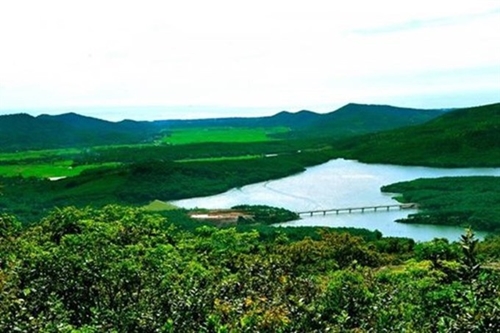The pagoda was built under the Tran Dysnaty.
It reached its peak under the Le Trung Hung Dynasty in the 18th century as a Buddhist center of the area, the researchers revealed. Over time, the pagoda was destroyed. A new pagoda was built at the site few years ago.
    |
 |
|
The pagoda looks out over the sea. Photo: dantri.vn |
Scientists from the Institute of Citadel Studies, part of the Vietnam Social Sciences Academy, have excavated a total area of 543sq.m at the site.
They found remnants of a workshop producing building materials and gathered thousands of ceramic objects that helped them determine the exact dates the site was active.
Scientists noted that the pagoda was formed in 14th century, shortly after the formation of the independent Dai Viet nation. Buddhism was flourishing in the area starting in the 10th century.
According to Bui Minh Tri, director of the institute, ancient documents mentioned Am Cac Mountain but scientists have not found any written clues on Am Cac Pagoda.
Researcher Tran Van Thuc, from the Thanh Hoa College of Culture, Sports and Tourism, said a group of researchers will go to China to search for more ancient documents concerning the founding, history and cultural value of the pagoda.
The pagoda is situated in Cac Mountain, 500 meters above sea level, overlooking the southeast sea of Thanh Hoa province. The pagoda used to be surrounded by jungle.
Scientists asked concerned agencies to do further research at the site to complete a dossier to propose recognizing the site as a national historic and landscape site.
Local authorities also intend to devise a plan to preserve and develop the site into a spiritual and tourism site with a total area of 300ha.
Source: VNA